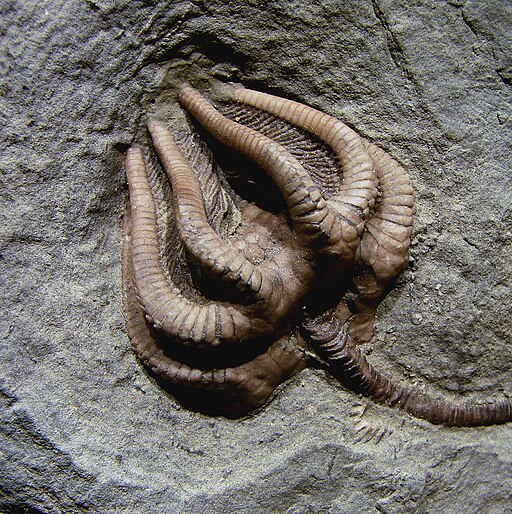The rock that underlays the Lehigh Portland Trails, which was used for cement manufacturing by the Lehigh Portland Cement Company, is primarily limestone and shale. It was formed about 300 million years ago, during the Pennsylvanian Period, by a vast shallow sea that stretched from what is now the Rocky Mountains eastward to the Atlantic. The sediments that were deposited by the water formed the limestones and shales. Limestone is composed primarily of calcite, which comes from the shells of marine organisms that accumulated on the seafloors. Fossils are concrete evidence of the abundant life that once populated the seas.
Wherever limestone is exposed, fossils can be seen. Fossils are especially easy to find on the bluff along the southeastern portion of the quarry lake.
Examples of fossils found at Lehigh Portland Trails

These are fossilized Crinoids (Sea Lilies), plus a tiny shell.

A fossilized Crinoid half-embedded in the limestone.

A variety of fossils in limestone at Lehigh Portland Trails.

A large fossilized shell, along with more Crinoids.

To the right is a photo of modern Crinoids (image courtesy of Wikipedia).
Learn more from Wikipedia: Crinoids
See also: Fossil Crinoids at the Kansas Geological Survey.
Sometimes, complete fossilized Crinoids are found, though only fragments have been noted at Lehigh. Here’s an example from Indiana:

